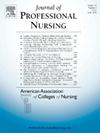在新整合的学术卫生系统内实施医生-教师模式:经验教训
IF 2.9
3区 医学
Q1 NURSING
引用次数: 0
摘要
美国医疗保健系统急需招聘和留住直接护理注册护士(RNs),部分原因是由于护士的高流动率,这造成了巨大的经济和非经济负担。大流行加剧了护士的流失率,而护理学院同时也经历了师资短缺,这使得有学士学位的注册护士进入劳动力市场的人数减少。我们庞大的学术卫生系统也经历了类似的挑战,而护理学院(CON)迅速增加学生入学人数,以满足对额外注册护士的需求,这需要一个立即和创造性的解决方案。方法CON与学术卫生系统共同建立了统一的医师-教师模式,支持符合教师标准的在职注册护士全面进入其专业护理实践的教学部分。有兴趣的注册护士被邀请接受CON的正式任命,并使用高达10%的全职等效(FTE)来监督学生的临床轮转。结果在合格的注册护士(n = 300)中,确认支持的注册护士在第一学期(n = 14)监督临床轮转,但在第二学期(n = 3)明显减少。实施后的调查结果表明,对优化后的作用总体满意;然而,参与的障碍是明显的。与沟通、报告结构和角色期望相关的挑战阻碍了参与,并为该模型的未来实施提供了经验教训。本文章由计算机程序翻译,如有差异,请以英文原文为准。
Practitioner-teacher model implementation within a newly integrated academic health system: Lessons learned
Background
United States healthcare systems face an imminent need to recruit and retain direct care registered nurses (RNs), driven in part by high nurse turnover rates, which contribute to substantial economic and non-economic burdens. The pandemic exacerbated nurse turnover rates, while colleges of nursing simultaneously experienced a faculty shortage lending to fewer baccalaureate prepared RNs entering the workforce. Our large academic health system experienced similar challenges while the College of Nursing (CON) rapidly increased student enrollment to meet the need for additional RNs requiring an immediate and creative solution.
Methods
Together, the CON and academic health system established a unified practitioner-teacher model supporting currently employed RNs meeting faculty criteria to fully step into the teaching component of their professional nursing practice. Interested RNs were invited to accept a formal appointment in the CON and use up to 10 % of their full-time equivalent (FTE) to supervise student clinical rotations.
Results
Of the qualified RNs (n = 300), those with confirmed support supervised clinical rotations during the first semester (n = 14) but decreased starkly during the second semester (n = 3). Post-implementation survey results indicated general satisfaction with the optimized role; however, barriers to participation were notable.
Conclusions
Challenges related to communication, reporting structure, and role expectations hindered participation and suggested lessons learned for future implementation of this model.
求助全文
通过发布文献求助,成功后即可免费获取论文全文。
去求助
来源期刊
CiteScore
4.80
自引率
8.00%
发文量
153
审稿时长
52 days
期刊介绍:
The Journal will accept articles that focus on baccalaureate and higher degree nursing education, educational research, policy related to education, and education and practice partnerships. Reports of original work, research, reviews, insightful descriptions, and policy papers focusing on baccalaureate and graduate nursing education will be published.

 求助内容:
求助内容: 应助结果提醒方式:
应助结果提醒方式:


